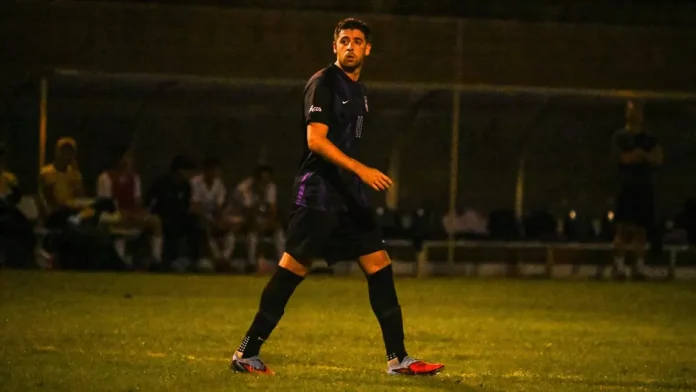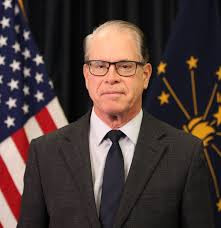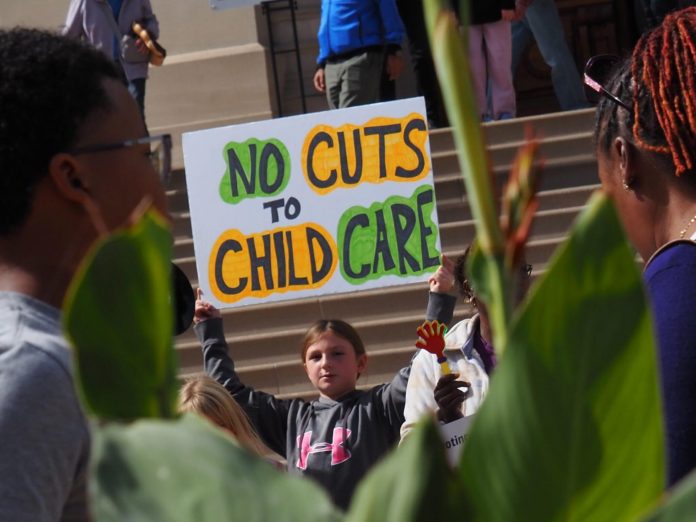HOT JOBS
|
|||||||||||||||||||||||||||||||||||||||||||||||||||||||||||||||||||||||||||||||||||
|
New Harmony Blues Festival, Nov. 5-9, 2025
New Harmony, IN – The Second Annual New Harmony Blues Festival kicks off on Thursday, November 6 with an exclusive VIP Supper Club event in the Caper’s Loft at Caper’s Emporium.
Friday, November 7 is Blues on Fire!, featuring Bex Marshall–an award-winning European Blues Diva virtuoso guitarist– , along with her band of international Blues heavyweight musicians to bring an amazing performance to historic New Harmony. Ruth Wyand, a legendary blues singer, songwriter and guitarist extraordinaire will open for Bex and her band, who will be joined by Gospel Blues and Jazz crooner Karl Dion Dixon.
Roots on Fire! closes the festival on Saturday, November 8, headlined by Tim Graves and the Farm Hands, the hottest group in American Bluegrass. Special guests include Greg Douglass, formerly of the Steve Miller Band and Rock and Roll Hall of Famer.
Thursday, November 6, 2024
6:00 – 9:30 pm
Blues, Brews and Stews
An Exclusive Dining Experience in an exquisite private location.
($75 — Purchase advance tickets online at EventBrite; no ticket sales at the door)
Caper’s Emporium Loft
602 Main Street New Harmony, IN 47631
Master Chef Jonathan Lolley, who excels in creating unique fusions of British, Italian, and French cuisine, will team up with local culinary legend Mary Beth Guard in the exclusive Capers Emporium Loft. As the audience is treated to a sublime meal, they will enjoy the magical sounds of The Bex Marshall Band (UK) and guitarists Ruth Wyand and Rock’n’Roll Hall of Fame guitarist, Greg Douglass.
Friday, November 7, 2025
Blues on Fire!
Thrall’s Opera House
612 Church St.
New Harmony, IN 47631
Experience an evening with the Bex Marshall Band, Ruth Wyand and special guest Karl Dion Dixon!
Doors open at 6:30, performance begins at 7:00
Tickets at EventBrite $25 in advance, $30 at the door
Bar service available
Saturday, November 8, 2025
Roots on Fire!
Thrall’s Opera House
612 Church St.
New Harmony, IN 47631
Oh, what a night! The finale of the New Harmony Blues Festival features high-energy performances by
Tim Graves and the Farm Hands–the hottest bluegrass band in America–joined by Rock and Roll Hall of
Fame guitarist Greg Douglass.
Doors open at 6:30, performance begins at 7:00 pm
Tickets at EventBrite $25 in advance, $30 at the door
Bar service available
EPD DAILY ACTIVITY REPORT
FOOTNOTE: EPD DAILY ACTIVITY REPORT information was provided by the EPD and posted by the City-County-County Observer without opinion, bias, or editing.
REMINDER: BURTON TO HOST “UNITED VOICES, HOOSIERS FIRST!” REDISTRICTING TOWN HALL AND LISTENING SESSION
Joined by Former Indiana Senator and U.S. Ambassador to The Holy See, Joe Donnelly
EVANSVILLE, Ind. – State Rep. Alex Burton (D-Evansville) will host a community town hall and listening session on Wednesday, Oct. 29, 2025, to address mid-decade redistricting efforts by the Statehouse majority and highlight the issues state leaders should be prioritizing instead.
The event will begin with brief remarks and a Q&A on redistricting, followed by an open forum for constituents to share their perspectives on redistricting and other challenges facing their community.
WHO: State Rep. Alex Burton, Former Indiana Senator and U.S. Ambassador to The Holy See Joe Donnelly
WHAT: Redistricting Town Hall and Listening Session
WHEN: Wednesday, Oct. 29, 2025 | 6-7:30 PM CST
WHERE: Evansville Public Library – McCollough (5115 Washington Ave, Evansville, IN 47715)
Purple Aces Down Louisville for First Time Since 2001
LOUISVILLE – Evansville senior Tancredi Fadda (Monza, Italy/University of Milan) notched his first career brace and freshman Devin Shepherd (Denver, Colo./Arapahoe) added a goal to power the Purple Aces to their first win over Louisville since 2001 on Monday night, taking down the Cardinals by a score of 3-1. The win was Evansville’s first over a power conference opponent since 2013 and the first over the Cardinals in Louisville since 1991.
Evansville jumped on top early in the match, scoring in the fourth minute to take a 1-0 lead. Fadda capitalized on a Louisville mistake, grabbing a loose ball at the top of the box and finding the back of the net for his third goal of the campaign.
Andres Escudero (San Sebastián de los Reyes, Spain/IES Joan Miro) nearly doubled the lead in the 11th minute, but his shot went just wide of the far post to keep it a one-goal game. Aces keeper Michal Mroz (Elk Grove, Ill./Elk Grove) was tested for the first time in the 17th minute and faced another shot on target in the 27th minute, but collected saves on both chances.
Evansville saw another near scoring chance in the 36th minute off a free kick, taken by Ben Zec (Carmel, Ind./Carmel). Zec placed a ball near the penalty spot for Håkon Edstrøm (Baerum, Norway/Norges Toppidrettsgymnas), but his header went just over the crossbar.
Just before halftime, the Aces broke through for their second goal of the match, with Shepherd scoring his fourth goal of the year. The chance was created by Zec once again, who lifted a ball from midfield line on the near side down towards the far side of the box for Shepherd, who uncorked a laser past the Cardinals keeper to make it a 2-0 game.
Louisville battled back in the second half, scoring a goal in the 64th minute to cut the Evansville lead back down to one. However, the Purple Aces kept their foot on the gas pedal and continued to threaten the Cardinals back line. Shepherd nearly secured his second brace of the season in the 72nd minute, putting a left-footed shot on target, but a great save by Louisville keeper Alex Svetanoff denied the freshman.
In the 78th minute, Escudero created another chance for the Aces, earning possession along the sideline in the Evansville attacking end. From there, Shepherd took the ball near the box before giving it back to Escudero, who delivered a beautiful cross into the box for Fadda. Off one touch and a spin, Fadda ripped a shot into the bottom right corner for his second goal of the night, delivering the dagger for a 3-1 win.
With the win, Evansville moves to 5-3-8 overall. The Purple Aces now turn their to attention to a critical final two matches of the regular season, beginning with the final home match of the regular season on Friday against Northern Illinois. Evansville, Northern Illinois and Drake currently sit in a three-way tie atop the MVC standings at 2-0-3, while the Aces look for their first regular season conference title since 1991. Friday’s match against the Huskies is set for 6 PM at Arad McCutchan Stadium.
CenterPoint Energy Announces Updated Generation Plan that Prioritizes Customer Affordability, Reliability and Local Economic Growth
2025 Integrated Resource Plan (IRP) leverages existing and planned generation resources to prioritize affordability and help reduce bill impacts for southwestern Indiana customers.
Plan builds on cancellation of nearly $1 billion in renewable generation projects, saving customers $18/month in current and future costs, and follows announcement of initial community affordability actions to target keeping rate increases near or below inflation through 2027.
Flexible IRP strategy will also provide options to support energy security, future demand and local economic growth and development across southwestern Indiana.
EVANSVILLE, Ind. – Oct. 27, 2025 – Today, CenterPoint Energy’s Indiana electric utility announced its 2025 Integrated Resource Plan (IRP), a forward-looking 20-year generation roadmap that prioritizes customer affordability and reliable service while supporting potential local economic growth. This IRP leverages existing and planned generation resources to meet customers’ energy needs while helping to minimize any rate increase in the near term for southwestern Indiana customers. The strategic plan is designed to mitigate future cost impacts of necessary critical investments on customers, with no potential rate adjustments anticipated to occur until 2029 or later. This plan follows the input of four public meetings and builds on CenterPoint’s recent actions to prioritize energy affordability and reliability across southwestern Indiana.
“All of us at CenterPoint Energy are focused on prioritizing affordability for our Indiana customers, while continuing to provide the safe, reliable service that our customers expect and deserve. Our 2025 IRP is designed to support local economic growth and energy security and meet current generation needs with minimal additional resources, while prioritizing energy affordability for our customers. Above all, this IRP plan provides us with options to meet future increases in demand brought by regional economic growth. This customer-focused and flexible strategy reflects our commitment to balancing affordability, reliability and remaining well positioned to meet southwestern Indiana’s long-term energy and economic needs,” said Mike Roeder, President of CenterPoint Energy Indiana. “The IRP also calls for the continuation of energy efficiency programs to help customers control their energy use to lower bills.”
The 2025 IRP and Other Affordability Actions: $1 Billion in Renewables Cancelled
As part of this effort, CenterPoint has cancelled nearly $1 billion in non-economical generation projects, providing current and future savings of approximately $18 per month for residential customers plus additional avoided generation costs at this time. These affordability measures coincide with the announcement of a first phase of Community Affordability Actions designed to target keeping rates near or below inflation through 2027.
Among these additional and previous affordability actions are the following:
- Two-Year Rates Stability: Starting in first quarter of 2026, stabilizing electricity bills by targeting to keep any rate change below or near the rate of inflation for the next two years, an action that equates to future savings for residential customer of approximately $18/month in avoided costs through 2027.
- Offset October Rate Increase: Reducing bills by nearly $3/month for average residential customers by December 2025 through a combination of bill adjustments and credits, which will offset rate changes that took effect in October.
- Customer and Community Engagement: Engaging with local customers, stakeholders and community leaders to listen, gather feedback and identify additional actions to prioritize affordability, while continuing to provide reliable power for southwestern Indiana customers.
- Long-Standing Affordability Actions: Reducing profits as part of the recent rate case settlement; eliminating profits on an older, retired coal plant to reduce customer costs by approximately $5 per month since June 2023; and not having filed any formal base rate case in 14 years to increase electric base rates.
2025 IRP: Affordably Ensuring southwestern Indiana’s Generation Needs
The 2025 IRP was developed with collaborative stakeholder and expert input, and it builds on recent steps to transition the company’s electric generation mix, including retiring or exiting more than 70% of the coal fleet that it operates (approximately 700 MW) and increased investments in renewable and natural gas resources. CenterPoint remains positioned for future demand with approximately 1.1 GW of new generation expected by 2026, more than 60% of which is expected to come from renewable resources.
Since the previous 2022-2023 IRP, CenterPoint has taken the following steps to advance its energy transition:
- Coal Retirement: Retired two coal-fired units at A.B. Brown and exited joint ownership of coal-fired Warrick Unit 4. The company is on track to suspend operation of the coal-fired F.B. Culley Unit 2 at the end of 2025. The IRP outlines continued operations of F.B. Culley 3 in the near term. Its future will be reassessed in the next IRP.
- Renewables and Natural Gas-Fired Generation: Brought online two 230 MW natural gas combustion units at A.B. Brown and a 191 MW solar array in Posey County, as well as gained approval for new renewable projects outlined in the previous IRP.
- Energy Efficiency: Initiated demand-side programs through its 2025-2027 Demand Side Management Plan.
CenterPoint has also taken a series of steps to limit near-term capital investments in certain generation projects that would increase customer bills. These steps included pausing the proposed natural gas conversion of F.B. Culley Unit 3 and the cancellation of nearly $1 billion in non-economical renewable projects, saving customers approximately $18 per month in current and future costs.
2025 IRP: Strategic Flexibility to Meet Future Demand
The 2025 IRP preferred portfolio also positions CenterPoint to respond to potentially significant new commercial and industrial demand for electricity. As part of the planning process, the company developed an alternate preferred portfolio to support scalable system expansion, including potential combined cycle upgrades at A.B. Brown. This approach helps enable CenterPoint to accommodate potential new load growth, while working to minimize cost impact to customers.
CenterPoint Energy provides safe, reliable energy to homes and businesses across southwestern Indiana, delivering electricity to approximately 150,000 customers in all or portions of Gibson, Dubois, Pike, Posey, Spencer, Vanderburgh and Warrick counties. CenterPoint will be submitting the final IRP to the Indiana Utility Regulatory Commission in early December. To learn more, visit CenterPointEnergy.com/IRP.
Gov. Mike Braun Calls Special Session on Redistricting and Federal and State Tax Issue
INDIANAPOLIS – Governor Mike Braun will today sign a proclamation calling a special legislative session for the General Assembly to convene on Monday, November 3, 2025 to consider altering the boundaries of Indiana’s congressional districts and to consider resolving an important issue regarding federal and state tax compliance that must be addressed.
“I am calling a special legislative session to protect Hoosiers from efforts in other states that seek to diminish their voice in Washington and ensure their representation in Congress is fair. I am also asking the legislature to conform Indiana’s tax code with new federal tax provisions to ensure stability and certainty for taxpayers and tax preparers for 2026 filings.” — Governor Mike Braun
Indiana uses federal tax law as the starting point for the Indiana tax return, and the recent changes to federal tax law in the One Big Beautiful Bill Act include provisions that impact Indiana state tax filings.
Addressing this discrepancy through a special session will provide taxpayers, accountants, and businesses the confidence and clarity ahead of filing season, avoid amended returns and filing delays, and continue the Indiana Department of Revenue’s strong record of fiscal management.
Amid cuts, Indiana child care providers mobilize
|
By Leslie Bonilla Muñiz |
|
Closing sites. Cutting curriculum. Dropping pay. Hoosier child care providers are scrabbling for ways to stay open as Indiana’s freeze on low-income vouchers cramps enrollment and double-digit reimbursement rate cuts eat away at already narrow margins. Providers collectively stand to lose an estimated $3.8 million a week — almost $200 million a year — according to Early Learning Indiana, a prominent child education advocacy group and site operator. “I don’t know where we’re going to be standing at,” said Jonathan Prewitt, who’s operated in-home programs in New Albany since 2011. “… I’m not saying that we’re going to be in business much longer. I’m hoping that we could … because our kids need us.” All of Prewitt’s clients pay with vouchers, which previously covered the cost of attendance at Pit Stop for Kids. Not anymore. “My parents depend on that, and they can’t afford to pay the difference,” he said. But he can’t afford to absorb the losses. Some providers are mobilizing to swap survival strategies, protest the state’s changes or get trained on advocating with lawmakers. “This crisis has created new collaboration,” said Hanan Osman, executive director of the Indiana Association for the Education of Young Children. “… We need to figure out how to resolve this before it’s too late.” Advocates say the cuts hurt more than just an industry. “There is really no second chance for this time of life, to make the kind of change that we can within the architecture of the brain, when children are in responsive and caring environments with learning opportunities around them,” said Maureen Weber, president and CEO of Early Learning Indiana. No exitLow-income Hoosier families can nab vouchers through two child care assistance programs: the federal Child Care and Development Fund and the state-level On My Way Pre-K. About 35,000 children typically participated pre-pandemic, according to the Indiana Family and Social Services Administration. That swelled to nearly 68,000 children in the final months of 2024 — the waning days of former Gov. Eric Holcomb’s administration.  FSSA put the jump in demand down to broadened income eligibility, state capacity-building grants and federal funding when, in December, it implemented the first waitlist for child care vouchers since 2018. “We had, essentially, an extra billion dollars in early care and education through the various rounds of COVID relief funds,” Weber explained. “And those funded a variety of things, but one of them was to fuel that increase in vouchers.” “Given the other decisions that the state might have made with those dollars, serving more children seems like a good one,” she continued. “I think what we didn’t do was have sort of the smoothest exit plan to bring those numbers back down, which is why we have now the really concentrated change that we’re all experiencing.” When Gov. Mike Braun took office in January, he proposed allocating $362 million to child care vouchers — enough to close the waitlist. Lawmakers scrapped that. Instead, they set aside $147 million in “hold harmless” funding for the 2026 fiscal year, which began July 1. It’s enough to renew vouchers at the same income requirements for families already on the program. New enrollees face narrower standards. FSSA is focusing on funding current participants, and “is not issuing new vouchers for 2025,” a spokesperson told the Capital Chronicle. Nearly 30,000 children were languishing on the waitlist in August, according to an agency subsidy dashboard. That’s the latest data available. OMWPK vouchers were curtailed for the current school year: there’s a cap of 2,500 enrollees that can each receive a maximum of $6,800 in funding, narrower eligibility thresholds and other changes. And last month, FSSA announced double-digit reimbursement rate cuts for CCDF vouchers: down 10% for infant and toddler care, 15% for preschoolers and a whopping 35% for school-age children. Braun’s FSSA pinned the blame on the Holcomb administration. “These adjustments address a $225 million funding gap through 2026 created by the prior administration’s unsustainable use of temporary COVID relief funds and ensure continued compliance with federal requirements,” a news release said. The rates went into effect Oct. 5, with the first pay date being Nov. 6. Children with vouchers were at least 25% of clients at almost half the state’s 4,300 providers in a March analysis by Early Learning Indiana. “We’re a really low-margin industry,” Weber said. “If a quarter of your payers are from the public sector, and some big portion of those are going away, there’s vulnerability there,” she added. But she’s most concerned about the 900 “highly dependent” providers with at least 75% of clients using vouchers. Voucher losses are hitting Hoosier providers at an estimated $1.9 million weekly, while reimbursement rate cuts subtract another $1.8 million weekly, according to an Early Learning Indiana dashboard unveiled this month. It breaks down the impacts by county. Cutting backProviders say they’re feeling the impacts — and making adjustments. “The pressures are high,” said the Rev. Jay Height, executive director of Shepherd Community Center in Indianapolis’ Eastside, where about 65% of children pay with vouchers. The organization had about 70 seats, but enrollment has fallen closer to 60. Some have just aged out, but others have lost their vouchers. “There’s no way for them to pay for it,” Height said. “We’re trying to put more emphasis on working with our families to help make sure that they keep their vouchers and don’t let it lapse or miss any deadlines.” Shepherd’s losing roughly $1,400 weekly.  The organization is exploring group purchasing and teacher-sharing; working with a company to examine utility expenses for possible savings; and trying to raise funds. The cuts have prompted a laundry list of changes at Little Duckling Early Learning Schools’ neighboring buildings along 38th Street, where more than 80% of students pay with vouchers. The sites were at 92% capacity this time last year, but are down to 68%, according to Site Director Jacqueline Strong. “We … never had a problem with enrolling. Our biggest issue, if there was an enrollment problem, was just having space,” said Strong, who’s worked at Little Duckling for six years. Some families are using their vouchers at elementary schools, but others are locked out — on the waitlist and unable to cover total costs themselves. Little Duckling has closed four classrooms and moved those students and teachers to the building next door. “With us not getting the new infants that we would’ve normally gotten,” Strong said, three infant rooms with capacity for 24 have dwindled to a single room with capacity for eight. The organization prides itself on its accredited child development and academic programs — even infants and toddlers have curriculums and lesson plans — but those materials have been halved to save money. Little Duckling has nixed free events like field trips and “donuts with dad,” cut back on professional development opportunities, lowered pay for new hires and more. Parents of young children must provide their own diapers. Dozens of providers gathered at Little Duckling this month to share ideas on saving money without dropping their standards. The lower reimbursement rates are “not enough to sustain what is considered a high-quality program,” Strong said.  It’s possible to run a child care center for less money, “but … you’re not able to all of the extra things that a high-quality program would normally do, because you won’t have funds,” she added. Little Duckling has a third site, located in a higher-income area along 82nd Street. A lower share of students use vouchers, so it hasn’t been as impacted, according to Strong. Early Learning Indiana’s Weber predicted conditions will worsen as the reimbursement rates take hold this autumn. Her group runs nine centers in Indianapolis, with about a third of students paying with vouchers. They’re losing $10,000 a week. Still, the 125-year-old organization is “relatively well situated to weather the storm,” Weber acknowledged. She warned others don’t have the operating reserves to survive. Early Learning Indiana has some philanthropic money it uses to support providers across the state, but it’s “a problem at the scale of government, to be candid,” Weber said. “I mean, it’s a multiple hundreds of millions of dollars problem.” Learning advocacySome providers are taking action. Prewitt, of Pit Stop for Kids, is gathering fellow New Albany-area operators to attend FSSA’s next quarterly financial reporting meeting Wednesday, with plans to rally after the child care discussion ends. He worries his parents will have to quit their jobs to take care of their children, or keep working and leave them home alone. Older kids might get into trouble, Prewitt fears, or be deputized into caretakers themselves for younger siblings. “Indiana chose to do this,” he said. “Why they chose to take from our kids instead of taking from one of them higher ups’ pockets or salary makes no sense.” Other providers are gathering, like at Little Duckling. They’re weighing in at listening sessions with the Indiana Association for the Education of Young Children, and they’re getting trained. The association just wrapped up a two-day advocacy and leadership academy in Indianapolis, attended by about 70 early childhood educators, according to Osman. The agenda includes breakout sessions to learn how to write an op-ed, how to approach news outlets or how to speak with lawmakers. “One of the things we (have) learned over the years is that we cannot be angry when we talk to a legislator,” Osman said. “We have to use numbers. We have to be positive. We have to show the collaborative.” The association doesn’t organize protests or endorse political candidates in line with its nonprofit status. Instead, it’s compiling testimonials and preparing members to meet with their representatives about the influence of early child education on kindergarten readiness, ways to lower expenses while maintaining quality and the hunt for sustainable government funding. A Statehouse day is also scheduled for February 5. “We cannot give up the work we have done in 25 years,” Osman said. |











